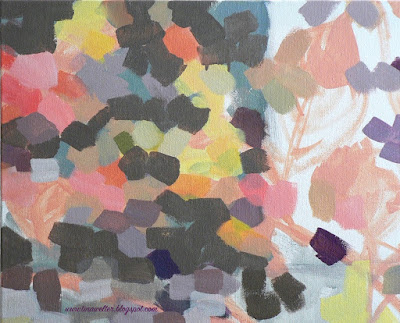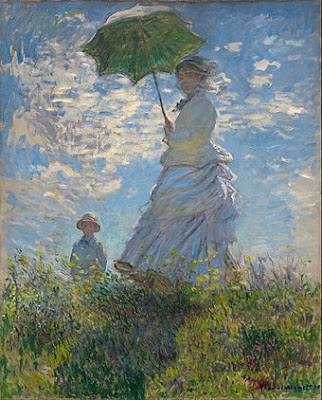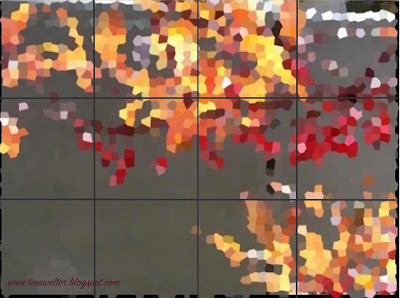 |
| Season Finale painting, color and brush stroke detail ©2018 |
 |
| Claude Monet, Woman with a Parasol - Madame Monet and Her Son 1875, National Gallery of Art, Washington, D.C. images from Wikipedia |
 |
| Claude Monet, Haystacks, (sunset), 1890–1891, Museum of Fine Arts, Boston |
For me, part of the puzzle is learning how to break down the color I am seeing into little pieces and then having the restraint to paint those small bits as individual brush strokes. This has always seemed overwhelming to me, but I recently came up with a solution. I used an effect on my computer to "crystallize" my reference photo to help me focus on those little bits of color.
 |
| Season Finale photo "crystallized" ©2018 Tina M.Welter |
Perhaps some folks will think this is cheating, but for me, it feels like using training wheels on a bike. I know practicing this skill will alleviate my overwhelm now and hopefully make it possible for me to become more confident painting this way.
So far, this strategy is working quite well. I've been able to get the basic colors and shapes down a lot faster than usual. Compare my first day painting to what I accomplished only eight painting days later.
 |
| Season Finale, 36x48 inches - first painting day ©2018 |
 |
| Season Finale, 36x48 inches - eighth painting day ©2018 |
The Impressionists wanted to capture the effects of light by not blending and shading colors smoothly on the canvas. They experimented with placing small brush strokes of primary colors and their complements together in such a way that the eye of the viewer does the color mixing instead. It's an ambitious goal and I think of it as one of those beautifully creative ideas that was perhaps a first step towards making the technology of television and computer screen pixels that we are familiar with today.
If you are interested in reading more about how the Impressionism movement began, who was in it and what the painting techniques were, this Wikipedia entry is really helpful. Click here
Happy learning and creating!
>^-^<
Tina
